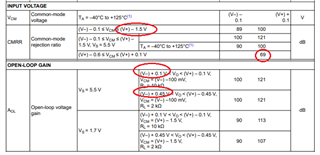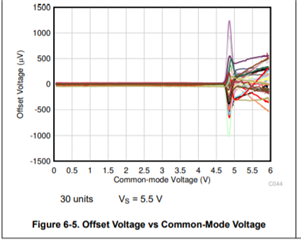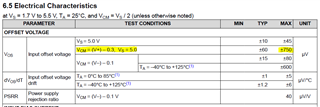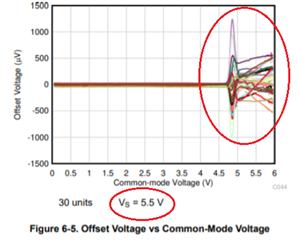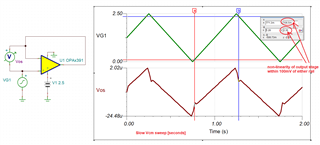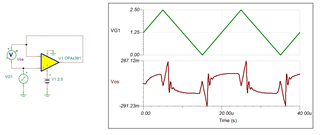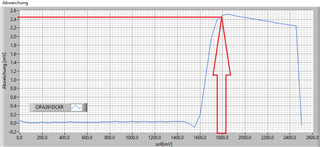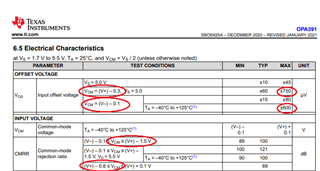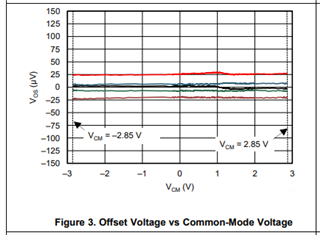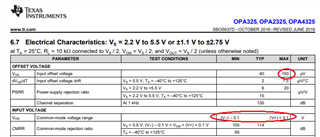Other Parts Discussed in Thread: OPA325, OPA387, OPA388, OPA369
We have a problem with the OPA391DCKR. Simply used as a voltage follower, we sometimes get (scattered over several patterns) such characteristic curves:
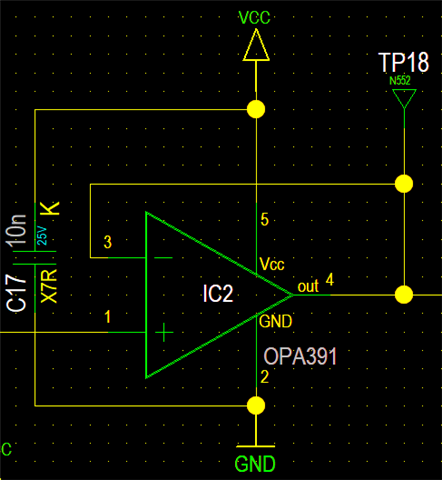
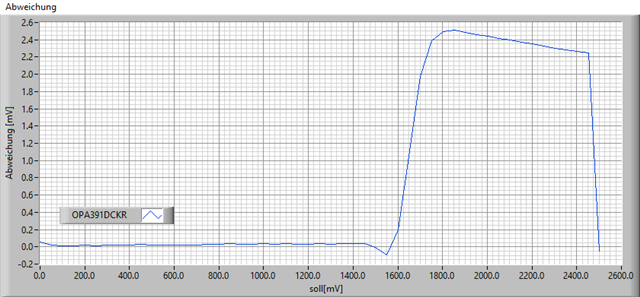
The circuit is supplied with VCC=2.5V. I have already disconnected all other connected circuit parts. (The last measuring point of the characteristic curve is inaccurate, because the voltage of the reference voltage sensor at 2.5V does not exactly match the operating voltage).
Measurements were taken with a Fluke 8846A at the output, the reference voltage transmitter is a Krohn-Hite 523. The maximum deviation of the measurement setup without the OPV is 40µV (yes, the devices are no longer freshly calibrated).
The basic course of the voltage deviation over the input voltage is outlined in the data sheet, but not to this extent. A deviation of more than 1mV is a KO criterion for us in this application. The OPV was selected because the data sheet specifies +/- 600µV over the full temperature range.
How can you explain this measurement?



